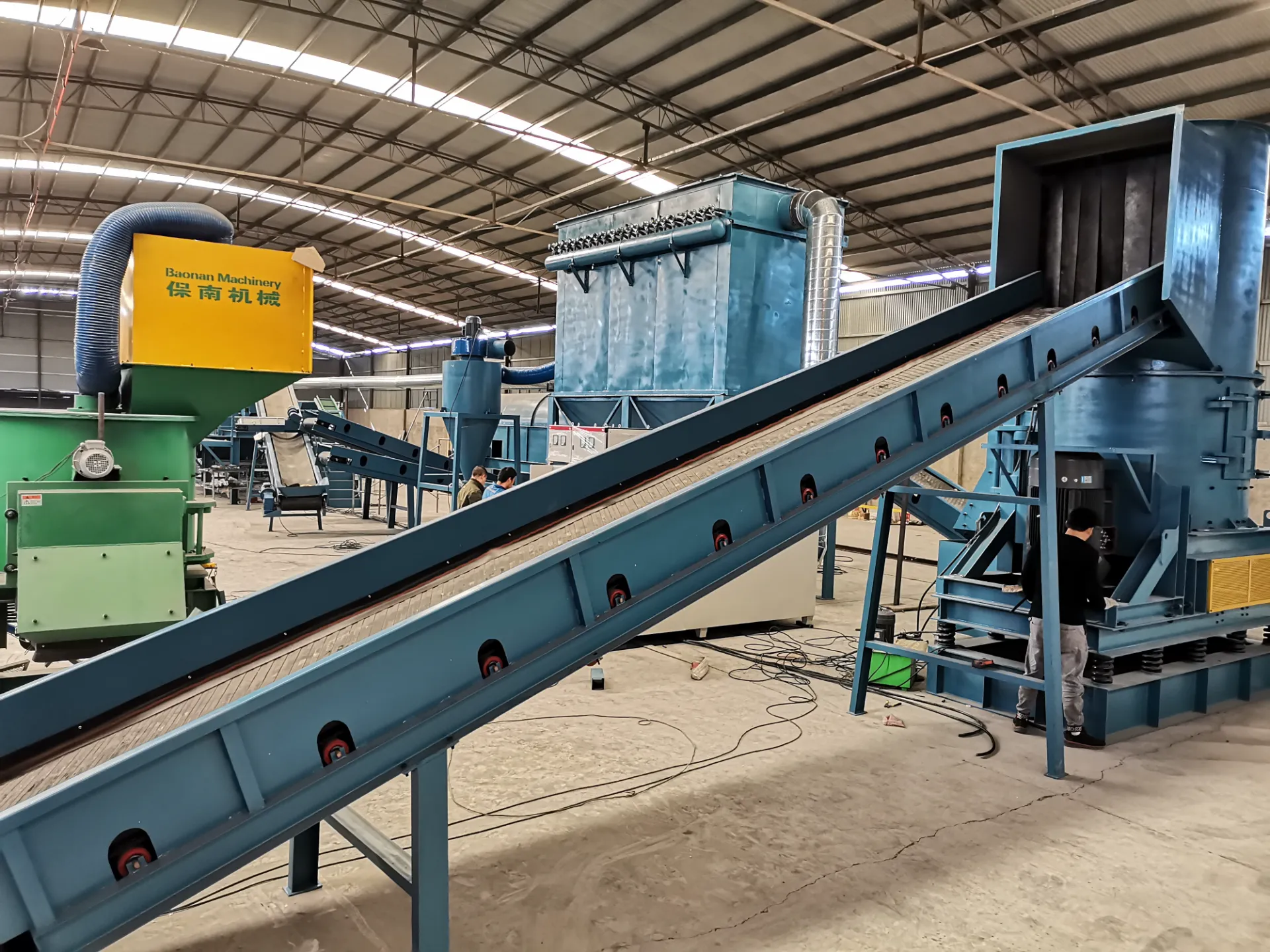

ഏപ്രി . 08, 2025 09:35 പട്ടികയിലേക്ക് മടങ്ങുക
In today’s world, the importance of metal recycling cannot be overstated. With a growing demand for raw materials, especially metals, it has become crucial to adopt efficient, eco-friendly methods of recycling. A metal recycling plant plays a vital role in this process, helping to reduce environmental impact, conserve natural resources, and promote sustainability. Whether you’re searching for a metal recycling plant manufacturer, considering the installation of a metal recycling plant, or exploring the metal recycling plant cost, this article will guide you through the essential aspects of setting up and operating a metal recycling facility.

A metal recycling plant is a specialized facility designed to process scrap metals and transform them into reusable raw materials. These plants employ various technologies and methods, such as shredding, sorting, melting, and refining, to convert scrap metal into high-quality products that can be used in the manufacturing of new metal goods.
Metal recycling not only reduces the need for mining and extraction of new raw materials but also helps cut down on energy consumption, greenhouse gas emissions, and waste production.
The operation of a metal recycling plant involves several key processes that enable the efficient extraction and repurposing of metal from scrap. These include:
The first step in a metal recycling plant is the collection of various types of metal waste, including steel, aluminum, copper, and other alloys. This waste is then sorted into different categories based on metal type, size, and quality. Sorting is often done manually or using magnetic separators and advanced optical sorting technology.
After sorting, the metal waste is fed into shredders to reduce its size and make it easier to handle. Shredding also improves the efficiency of the melting process. Shredded metal can be further processed or directly transported to the next stages.
The shredded metal is then heated in furnaces to melt it down into a liquid form. This allows for impurities to be removed. Refining is done to ensure that the final product meets specific quality standards, depending on the type of metal being recycled.
Once the metal is melted and refined, it is poured into molds to form ingots, billets, or other shapes suitable for resale or further processing.
The final step involves packaging the refined metal products into easily transportable forms, such as metal ingots, scrap bundles, or metal sheets, ready for distribution to manufacturers or other buyers.
Metal recycling conserves natural resources by reducing the need for mining and extraction of virgin metals. Since many metals (like aluminum, copper, and steel) can be recycled indefinitely without losing quality, recycling helps ensure the longevity of these valuable resources.
Selecting the right metal recycling plant manufacturer is crucial to ensuring the success and efficiency of your recycling operations. When evaluating potential manufacturers, consider the following factors:
Look for manufacturers that provide state-of-the-art technology for metal processing, such as high-efficiency shredders, magnetic separators, and advanced sorting systems. The more advanced the technology, the higher the throughput and quality of the end products.
A good metal recycling plant manufacturer should offer customized solutions tailored to your specific needs. This might include plant size, production capacity, and equipment configuration. Customization ensures that the plant will meet your operational requirements and maximize efficiency.
Choose manufacturers with a proven track record and strong reputation in the industry. Look for those with a history of providing reliable machines, timely delivery, and good after-sales support. You can check online reviews, client testimonials, and ask for references from other businesses.
Ensure that the manufacturer provides excellent after-sales support, including maintenance services, spare parts availability, and operator training. A plant can only be efficient if it is well-maintained, so access to reliable service and support is crucial.
The metal recycling plant cost can vary significantly based on several factors, including:
The cost of a metal recycling plant typically falls in the following ranges:
Small-scale plants: For processing a limited amount of metal waste, the initial investment could range from $100,000 to $500,000. This typically includes basic equipment like shredders, sorting systems, and furnaces.
Medium to large-scale plants: For more complex and high-capacity plants, the cost can range from $500,000 to $3 million or more. These plants often have advanced sorting, shredding, and refining equipment, as well as automation systems.
Fully automated plants: Fully automated facilities with the highest processing capacities and state-of-the-art technology can exceed $3 million in initial setup costs.
Investing in a metal recycling plant is not only a smart business decision but also a sustainable one. With rising concerns over environmental impact and resource conservation, metal recycling plays a pivotal role in building a circular economy. By partnering with a reputable metal recycling plant manufacturer, you can ensure your facility operates efficiently and cost-effectively, providing long-term benefits both financially and environmentally.
Whether you are looking to set up a small-scale facility or a large, high-capacity plant, make sure to consider factors such as technology, customization, cost, and after-sales support to choose the right solution for your business.
പുതിയ വാർത്ത
Metal Shredder: The Ultimate Solution for Metal Recycling
വാർത്തApr.08,2025
Metal Recycling Plant: The Future of Sustainable Waste Management
വാർത്തApr.08,2025
Eddy Current Separator: Revolutionizing Metal Recycling
വാർത്തApr.08,2025
E-Waste Shredder: Efficient Recycling for Electronic Waste
വാർത്തApr.08,2025
Double Shaft Shredder: The Ideal Solution for Heavy-Duty Material Shredding
വാർത്തApr.08,2025
Cable Granulators: Revolutionize Your Cable Recycling Process
വാർത്തApr.08,2025